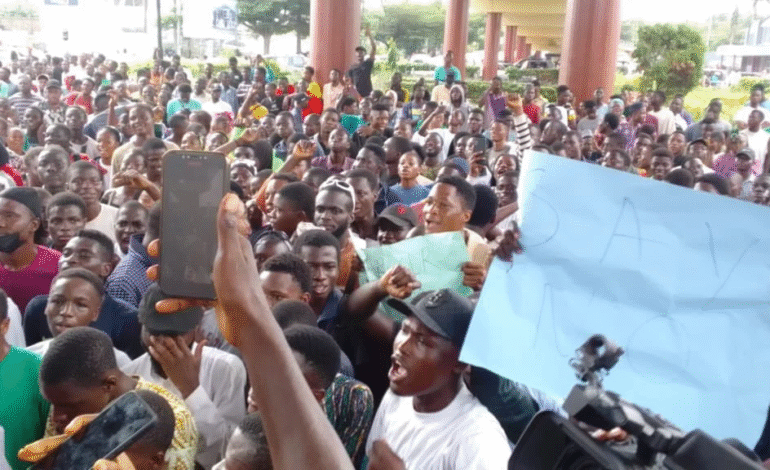Spain's Fed-Up Locals Use Fake Beaches to Fight Overtourism in Majorca - Travel And Tour World
Tuesday, July 1, 2025

Majorca, a Balearic Island that seems to be straight out of a picture postcard scene, has been acquainted with mass tourism for some time now. However, with every new wave of visitors, resentment among locals directed against tourists only grows. In opposition to congestion in their beaches, local residents have even used an uncommon tactic of making fictional beaches and directing innocent tourists to make-believe coastal spots. The absurd tactic has been a part of a larger campaign against tourism in Majorca, with episodes of protest against tourism, simulated beach closures, and demands for tourism sustainably-friendly.
The latest protest in Majorca involves residents creating fictional beaches with names that mimic popular coastal areas. These fabricated destinations are deliberately designed to mislead tourists, encouraging them to visit urban areas far removed from the island’s picturesque coastlines. The goal of this protest is to reduce the impact of overcrowding on Majorca’s most famous beaches.
A local woman, who shared the details of this plan in a video, explained how tourists could easily be duped into visiting dangerous and inaccessible spots by trusting these false beach names. According to her, tourists should always verify the existence of a beach online before embarking on their journey. If the location appears with limited or no information, it’s likely a fake.
The problem of overtourism has been growing in Majorca for years. Tourists flock to the island during the summer months, filling beaches, roads, and even local neighborhoods. For locals, this influx of visitors brings numerous issues, including environmental degradation, overcrowded spaces, and an overwhelming burden on infrastructure.
One of the most notable examples is the island’s famous Platja de Palma. Once a serene stretch of sand, it has now become a tourist magnet, attracting large crowds that disrupt both the environment and the local community. Protesters argue that such beaches have become “theme parks,” where locals can no longer enjoy their own natural heritage without being surrounded by throngs of visitors.
Protest groups in Majorca have been vocal about the need for sustainable tourism. They argue that the current tourism model, which prioritizes profit, is harming the island’s delicate ecosystem and diminishing residents’ quality of life. Some residents have gone as far as to call for tourist-free zones, where only locals are allowed to visit the beaches and natural attractions.
In line with these sentiments, protest groups like Menys Turisme Més Vida (Less Tourism, More Life) have become active in pushing for tourism restrictions. Their demands include:
Their aim is not just to limit tourism for the sake of reducing crowds, but to preserve the local way of life and protect the island’s environment from further damage.
While some locals welcome these protests, others argue that restricting tourism could have serious economic consequences. Tourism is the backbone of Majorca’s economy, providing thousands of jobs and generating significant revenue. Many of the protest groups’ actions, including the creation of fake beaches, are viewed as damaging to the island’s reputation and the livelihood of those who depend on tourism.
A long-time property owner in Majorca expressed concern about these protests, pointing out that British tourists, in particular, have been major contributors to the local economy for decades. He questioned what would happen to the island’s economy if such tourists were discouraged from visiting.
As protests continue, the role of the local government in addressing tourism in Majorca becomes more critical. Many residents feel that the authorities have not done enough to manage the influx of visitors. Activists argue that it’s not enough to merely restrict tourism on an ad hoc basis; there needs to be a comprehensive, long-term plan for managing the island’s tourism sector sustainably.
The debate surrounding tourism restrictions is not unique to Majorca. Other popular destinations in Europe, such as Venice and Barcelona, have also experienced similar challenges due to overcrowding and environmental degradation. However, the situation in Majorca remains particularly intense due to its reliance on mass tourism and the seasonal pressures that come with it.
The future of tourism in Majorca is uncertain. Protest groups and locals continue to push for stricter regulations to protect their environment and quality of life. However, any long-term solutions will require cooperation between local residents, government officials, and tourism businesses.
Overall, while this fake beaches ploy seems drastic, it underlines locals’ frustrations with being unable to deal with tourism’s adverse effects in Majorca. The solution to the problems of overtourism will ultimately depend on how to strike a balance between maintaining the island’s beauty and guaranteeing the financial viability of tourism. Sustainable tourism, if done properly, would have its advantages for locals and tourists alike in that it would create a more responsible and equalized way of traveling in Majorca.
«Enjoyed this post? Never miss out on future posts by following us»









:max_bytes(150000):strip_icc()/GettyImages-667880444-510741c2f2e94967bdaac8d5967a2547.jpg)
:max_bytes(150000):strip_icc()/GettyImages-2188223483-935d16edf06c4034b5a17fd6ef29f457.jpg)